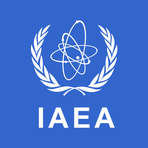The Escalating Storm: Israel and Iran in a Deadly Dance
June 18, 2025, 4:39 am

Location: Austria, Vienna
Employees: 1001-5000
Founded date: 1957
The Middle East is ablaze. A fierce conflict between Israel and Iran has erupted, shaking the region to its core. The echoes of missiles and the cries of the wounded fill the air. This is not just a battle; it’s a clash of titans, each strike reverberating with historical animosity and geopolitical stakes.
For three days, the skies have darkened with smoke and the sounds of explosions. Israel, armed with advanced technology and a resolute military, has launched a series of strikes against Iranian targets. The aim? To thwart Iran’s nuclear ambitions. The stakes are high. The fear of a nuclear-armed Iran looms large, casting a shadow over the region.
On the ground, the situation is dire. In Iran, the toll is staggering. Reports indicate hundreds dead, including civilians caught in the crossfire. In Israel, the death toll is rising too, with families shattered by the loss of loved ones. A 10-year-old child, a victim of the violence, serves as a heartbreaking reminder of the human cost of war.
The conflict ignited when Israel targeted key military leaders and nuclear facilities in Iran. The Israeli military claims it has achieved “full aerial superiority” over Tehran. This is a bold assertion, but the reality is grim. Iranian missiles have rained down on Israeli cities, striking residential areas and causing chaos. The Iron Dome, Israel’s defense shield, intercepts many, but not all. Each missile that slips through brings destruction and despair.
Iran, for its part, is retaliating with ferocity. Over 370 missiles have been launched at Israel, a testament to its resolve. The Iranian leadership vows to respond with even greater force. This cycle of violence is a dangerous game, with both sides unwilling to back down. The rhetoric is heated, with threats exchanged like currency in a market of fear.
The world watches with bated breath. The United States, a key player in this drama, finds itself in a precarious position. Former President Trump, attending the G7 summit, issues warnings to Iran, insisting it cannot possess nuclear weapons. His words echo through the halls of power, but the reality on the ground is far more complex. Diplomacy seems a distant dream as hostilities escalate.
In Tehran, the atmosphere is tense. State-run television becomes a target, struck during a live broadcast. The chaos unfolds on screen, a stark reminder of the war’s reach. Journalists flee as explosions rock the studio. The broadcast abruptly shifts to pre-recorded segments, a chilling testament to the danger faced by those reporting the truth.
As the conflict deepens, the humanitarian crisis worsens. Hospitals in Iran are overwhelmed with casualties. Civilians are caught in the crossfire, their lives turned upside down. The Iranian government’s death toll is met with skepticism, as human rights groups report far higher numbers. The fog of war obscures the truth, leaving families searching for answers amid the rubble.
In Israel, the mood is equally somber. Residents huddle in bomb shelters, their lives disrupted by the constant threat of missile attacks. The fear is palpable. Yet, amidst the chaos, there is a sense of resolve. Many Israelis express unwavering support for their government’s actions, believing that the fight against Iran is a fight for their future.
The international community is left grappling with the implications of this conflict. Calls for de-escalation echo through diplomatic channels, but the response from both sides is tepid at best. Iran’s foreign minister hints at a desire for negotiations, but the conditions for peace seem elusive. The specter of war looms large, threatening to engulf the region in a broader conflict.
As the days pass, the situation remains fluid. Each missile fired, each strike launched, adds fuel to the fire. The world holds its breath, hoping for a resolution but fearing the worst. The dance of destruction continues, a deadly ballet with no clear end in sight.
In the midst of this turmoil, the human cost remains the most tragic aspect. Families are torn apart, lives lost in a conflict that seems never-ending. The children, the innocent, bear the brunt of this violence. Their futures hang in the balance, caught in a struggle between nations.
As the sun sets over the Middle East, the shadows grow longer. The conflict between Israel and Iran is not just a battle of arms; it is a clash of ideologies, a struggle for power, and a fight for survival. The world watches, waiting for a glimmer of hope amid the darkness. But for now, the storm rages on, relentless and unforgiving.
For three days, the skies have darkened with smoke and the sounds of explosions. Israel, armed with advanced technology and a resolute military, has launched a series of strikes against Iranian targets. The aim? To thwart Iran’s nuclear ambitions. The stakes are high. The fear of a nuclear-armed Iran looms large, casting a shadow over the region.
On the ground, the situation is dire. In Iran, the toll is staggering. Reports indicate hundreds dead, including civilians caught in the crossfire. In Israel, the death toll is rising too, with families shattered by the loss of loved ones. A 10-year-old child, a victim of the violence, serves as a heartbreaking reminder of the human cost of war.
The conflict ignited when Israel targeted key military leaders and nuclear facilities in Iran. The Israeli military claims it has achieved “full aerial superiority” over Tehran. This is a bold assertion, but the reality is grim. Iranian missiles have rained down on Israeli cities, striking residential areas and causing chaos. The Iron Dome, Israel’s defense shield, intercepts many, but not all. Each missile that slips through brings destruction and despair.
Iran, for its part, is retaliating with ferocity. Over 370 missiles have been launched at Israel, a testament to its resolve. The Iranian leadership vows to respond with even greater force. This cycle of violence is a dangerous game, with both sides unwilling to back down. The rhetoric is heated, with threats exchanged like currency in a market of fear.
The world watches with bated breath. The United States, a key player in this drama, finds itself in a precarious position. Former President Trump, attending the G7 summit, issues warnings to Iran, insisting it cannot possess nuclear weapons. His words echo through the halls of power, but the reality on the ground is far more complex. Diplomacy seems a distant dream as hostilities escalate.
In Tehran, the atmosphere is tense. State-run television becomes a target, struck during a live broadcast. The chaos unfolds on screen, a stark reminder of the war’s reach. Journalists flee as explosions rock the studio. The broadcast abruptly shifts to pre-recorded segments, a chilling testament to the danger faced by those reporting the truth.
As the conflict deepens, the humanitarian crisis worsens. Hospitals in Iran are overwhelmed with casualties. Civilians are caught in the crossfire, their lives turned upside down. The Iranian government’s death toll is met with skepticism, as human rights groups report far higher numbers. The fog of war obscures the truth, leaving families searching for answers amid the rubble.
In Israel, the mood is equally somber. Residents huddle in bomb shelters, their lives disrupted by the constant threat of missile attacks. The fear is palpable. Yet, amidst the chaos, there is a sense of resolve. Many Israelis express unwavering support for their government’s actions, believing that the fight against Iran is a fight for their future.
The international community is left grappling with the implications of this conflict. Calls for de-escalation echo through diplomatic channels, but the response from both sides is tepid at best. Iran’s foreign minister hints at a desire for negotiations, but the conditions for peace seem elusive. The specter of war looms large, threatening to engulf the region in a broader conflict.
As the days pass, the situation remains fluid. Each missile fired, each strike launched, adds fuel to the fire. The world holds its breath, hoping for a resolution but fearing the worst. The dance of destruction continues, a deadly ballet with no clear end in sight.
In the midst of this turmoil, the human cost remains the most tragic aspect. Families are torn apart, lives lost in a conflict that seems never-ending. The children, the innocent, bear the brunt of this violence. Their futures hang in the balance, caught in a struggle between nations.
As the sun sets over the Middle East, the shadows grow longer. The conflict between Israel and Iran is not just a battle of arms; it is a clash of ideologies, a struggle for power, and a fight for survival. The world watches, waiting for a glimmer of hope amid the darkness. But for now, the storm rages on, relentless and unforgiving.
